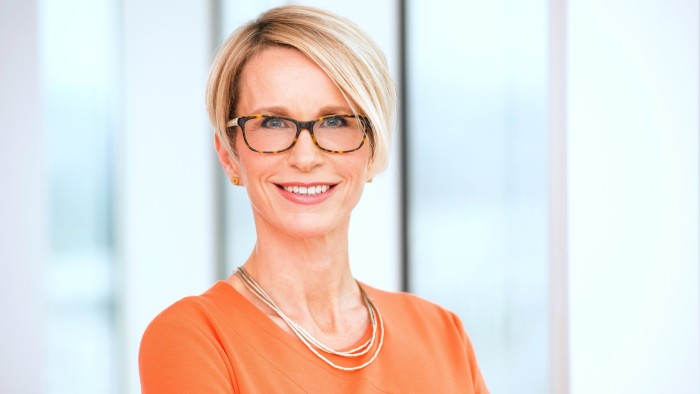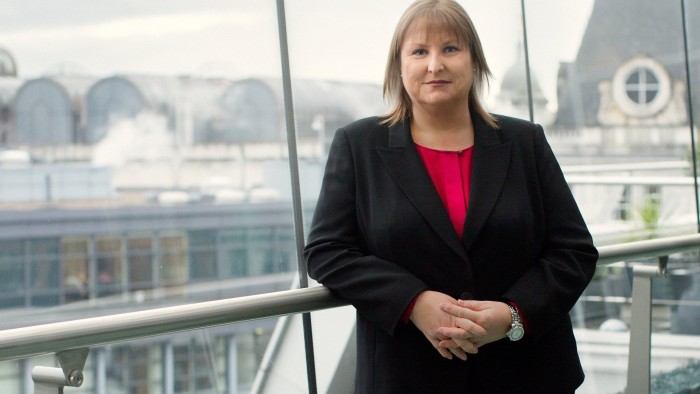The new routes to the executive suite will help women

Roula Khalaf, Editor of the FT, selects her favourite stories in this weekly newsletter.
At some point, most women seeking executive roles hear this piece of advice: make sure you get to run operations with their own profit and loss account.
Indeed, the conventional wisdom that P&L — with the implied responsibility for monitoring resources and costs — is the path to greatness is borne out by the career histories of female chief executives of big companies. Emma Walmsley, who will shortly take up her new role as chief executive at GlaxoSmithKline, is a prime example.
According to executive search consultancy Egon Zehnder, following Ms Walmsley’s promotion all seven of the female chief executives of FTSE 100 companies will have had at least some operational experience, whether as chief executive, chief operating officer or divisional head.
Ms Walmsley has been promoted from running the pharmaceuticals company’s consumer healthcare division. Only one of the 10 female chief executives in the next 150 biggest listed UK companies had no operational experience.
The picture looks slightly different in the US, where a number of high-profile female chief executives — including Safra Catz, co-chief executive of Oracle, and Indra Nooyi of PepsiCo — graduated from the chief financial officer role.
Indeed, the appointment of Jessica Uhl as chief financial officer of Royal Dutch Shell last year led to speculation that a slight rise in the number of women becoming finance directors of big companies would feed through to chief executive roles.
In reality, a minority of chief financial officers, irrespective of gender, rise to the top job. Korn Ferry, the executive search group, found in a 2015 survey that only 13 per cent of chief executives in the 2,000 biggest US companies had moved from the finance function.
Hands-on operational experience — such as chief operating officer, or divisional head — still counts, but breadth of experience is increasingly more important than depth when companies select their next chief executive.
A candidate’s potential and traits, less obviously based on their CV, are also becoming more relevant: curiosity, agility, resilience and the ability to win hearts and minds of staff, for example. In addition, younger aspiring leaders are taking alternative routes to the top in a development that may favour women, who tend to have more variegated careers.

Jill Ader, a London-based consultant at Egon Zehnder, where she focuses on chief executive and board succession, says: “No one knows all the answers any more, so [the chief executive] needs to be someone who can draw from a lot of experience round the table and around the organisation.”
Many multinationals develop senior executives by ensuring they receive a rounded experience. That could include giving a potential chief executive who has risen through the finance department an operating role, as happened to Alison Cooper, chief executive of Imperial Brands, who was chief operating officer before her promotion.

The emphasis on breadth also cuts the other way. An executive with lots of hands-on knowledge needs to find ways of accumulating insights into strategy or the workings of the boardroom. As Alison Brittain, chief executive of Whitbread, which owns the Premier Inn and Costa Coffee brands, told the 2016 FT Women at the Top summit, companies should “get people to have broader experience, not just functionally, not just P&L, not just technical”.
But Ms Ader always advises companies to consider what candidates could achieve in the future, rather than what they have managed in the past. “Look at the potential of your candidates,” she says. “Otherwise, you could put a heavy weight on operational and P&L experience, but it doesn’t mean you have got the CEO [who will last] for the next three to five years”.
Sallie Krawcheck, co-founder of Ellevest, an investment platform for women, has CFO and CEO experience on Wall Street, and is author of a new book, Own It — The Power of Women at Work . She is more critical of the conventional wisdom. In a recent article for LinkedIn, she cited the advice to “take on P&L roles instead of support functions” as one example that pushes women to “act like men” in order to get on.
Alternatively, the proliferation of boardroom gender targets and, in some countries, quotas, means women are often tempted to step off the executive ladder to pursue a portfolio career as a non-executive. Headhunters say executives, irrespective of gender, are starting to think of board membership as a different type of experience they can later trade in for another executive post, rather than the top job.
These developments make it even more important for companies not to assume that talented women are all looking to become chief executives and to talk to their high-potential executives about their ambitions and assumptions.
More important still is the conversation that women — and men — must have with themselves about the roles that may suit them best later on.
After all, as Ms Ader says, “if you can’t imagine yourself doing the role, why should anyone else be able to imagine you doing it?”
Comments